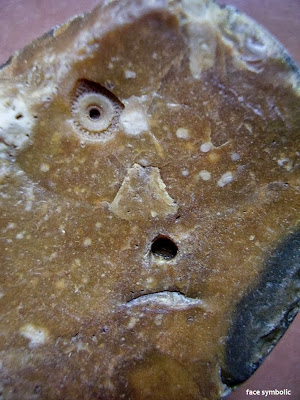Beegden, The Netherlands, archaeologist Jan van Es, >200,000 years before present
Horse head image interpreted by van Es
Fish head image interpreted by van Es
Feliks, J. 1998. The impact of fossils on the development of visual representation. Rock Art Research 15: 109-34.
"Abstract: The origins of visual representation have been debated primarily in terms of human activity and psychology. This paper proposes that man-made representation was preceded by a natural, already quite perfected representational system, the products of which were observed and collected by early humans. The author suggests the following new hypotheses: (1) Fossils were a means by which human beings came to understand the concepts of 'imagery' and 'substitution' prior to the creation of man-made images. (2) Humans evolved their own forms of iconic visual representation (especially those in the medium of rock), having first been made aware of various possibilities via fossils. (3) Many unexplained prehistoric artworks may be structurally and proportionally accurate depictions of fossils. Because fossils are known throughout the world, the hypotheses have cross-cultural validity. Clinical studies offer the potential of analogical testability."
-kbj






This idea that fossils would have been primary in the learning of imagery is fascinating. I have found some chert pieces with fossils where a piece of the stone had been removed to put in evidence a configuration of eyes, nose, mouth. Or to show off a fossil . And to find more fossils inside a rock?
ReplyDeleteIt felt many times that this kind of material would have been a material of choice, a " fun" material to work with and to get your imagination going. ( my modern interpretation).